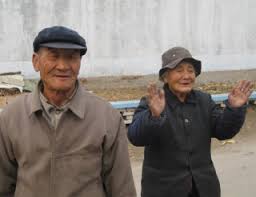 The Economist
The Economist posted an interesting article where the author Mr. Arvind Subramanian portrays the picture of world economy in the next 20 years. The auther combined the index of economic dominance by considering three dominant factors: country's share of world GDP, trade and foreign investment. The index predicts a rapid increase in China's share of world GDP and a perpetual decline of America's economic leadership. According to his calculations by 2030, China will account for over 23 percent of world GDP. Although the author warns against big changes in geopolitical and economic landscape in the coming decades, the role of demography in these prediction has been overlooked. In fact, the author did not pay sufficient attention to the dynamics of ageing that will occur in the coming decades.
Although China's impressive growth record of last decades is result of its low level of income per capita compared to Western economies, its demographic prospects undermine China's long-run growth potential. China pursued strict birth-control policies and contoversial one-child policy, supposedly to prevent overcrowding of the population, particulary in densely-populated urban areas. China has been characterized by low fertility rate even though countries in the same income ladder enjoy disproportionely higher total fertility rate. In 2010, China's total fertility rate of 1.54 children per woman was surpassed by the majority of Western countries such as U.S. 2.06, France 1.97, UK 1.92, Norway 1.77, Netherlands 1.66 and Canada 1.58 childern per woman. As a consequence, one should not overlook the possibility of rapidly ageing Chinese population in spite of plenty of space to sustain robust catch-up growth.

As a country with abundant workingage population, Chinese policymakers might sooner or later introduce universal social security schemes that would in the long run jeopardize fiscal obligations and net financial liabilities from social security. The cost of ageing should not be underestimated even though current demographic projections do not capture the extent of policy changes therein that will eventually enter the couse of China's economic development.
The slow down of China's growth shoul be expected, in spite of current rapidity of growth - the situation that Japanese economy resembled in early 1980s when it rapid growth exhausted it potential.




